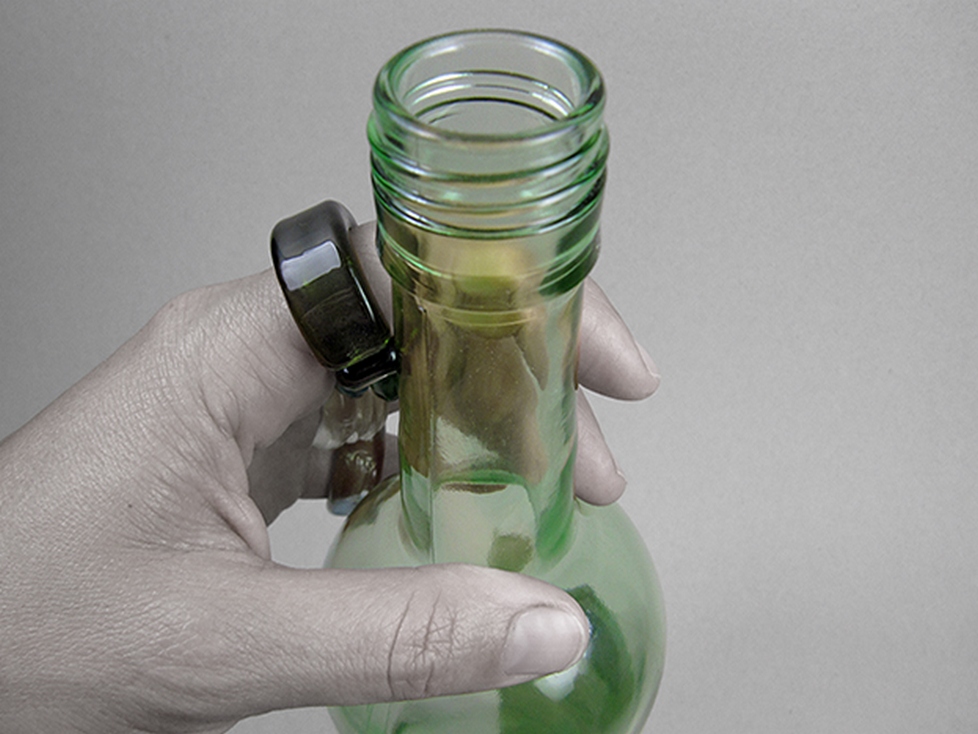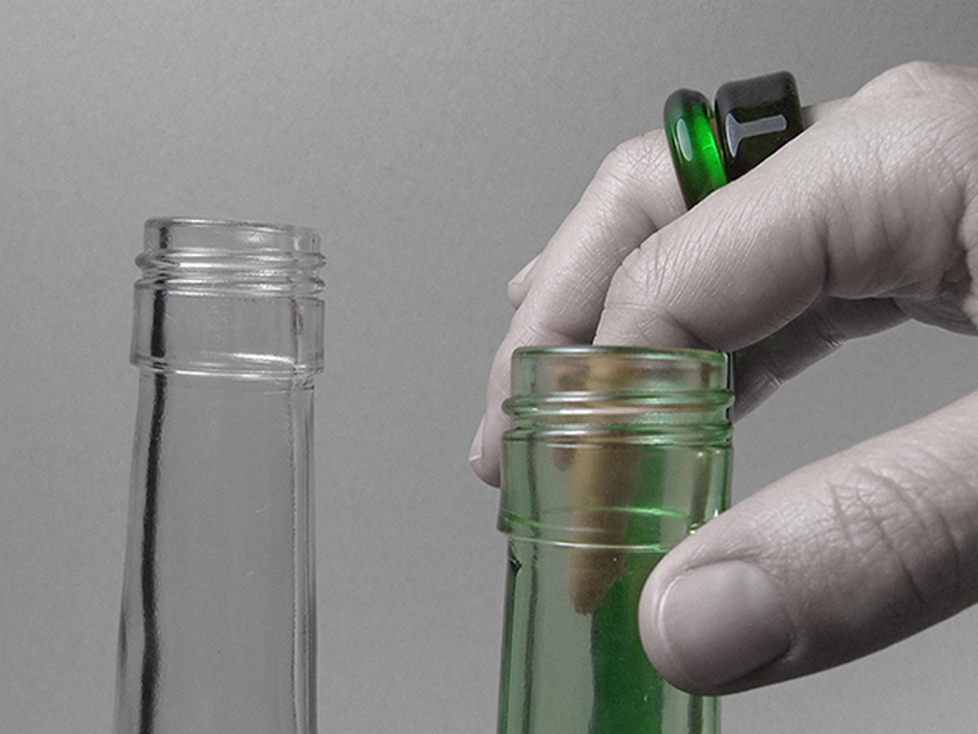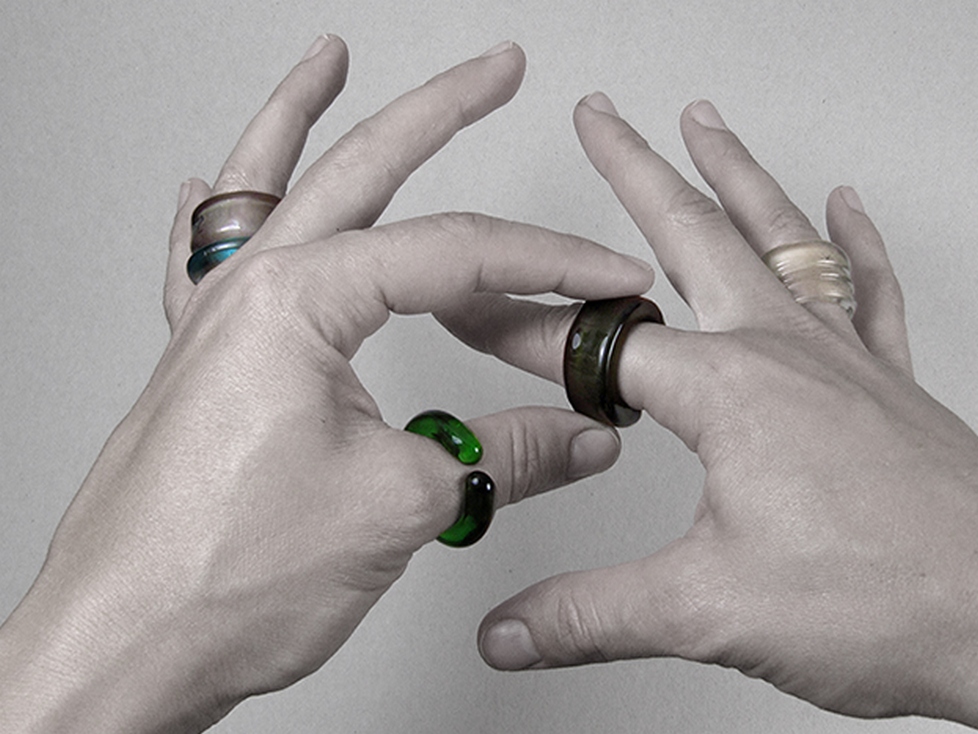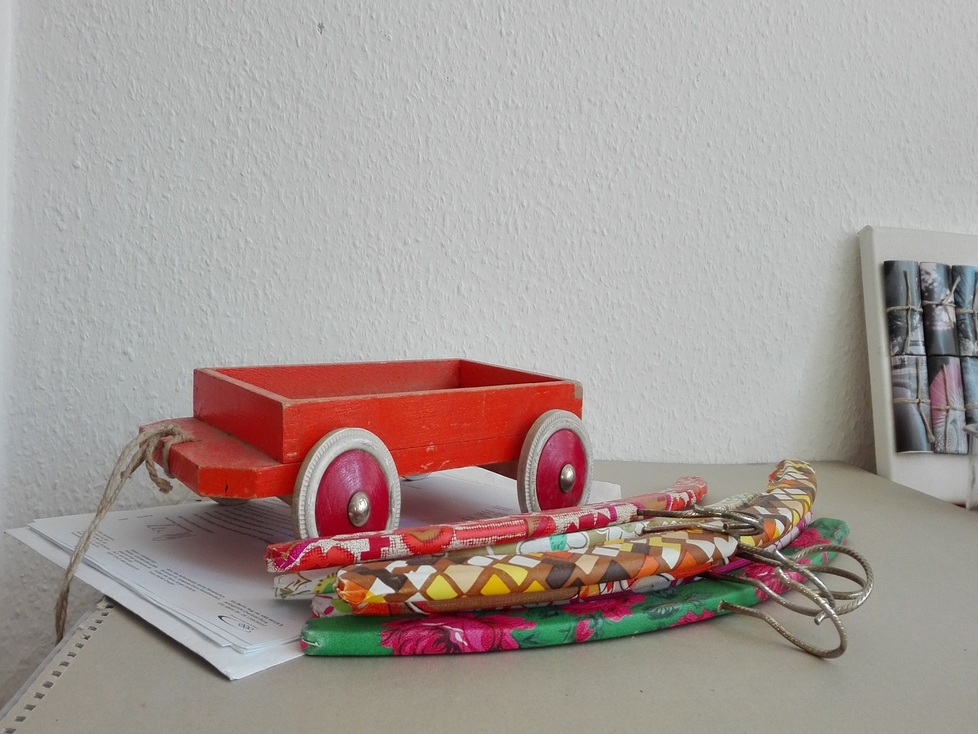On the Hunt for Serendipity …
We visited the product designer and installation artist Carolin Koch in her workshop in Berlin-Rixdorf and spontaneously photographed what was lying around her studio. This was a real wunderkammer experience!
Text: Paulina Tsvetanova
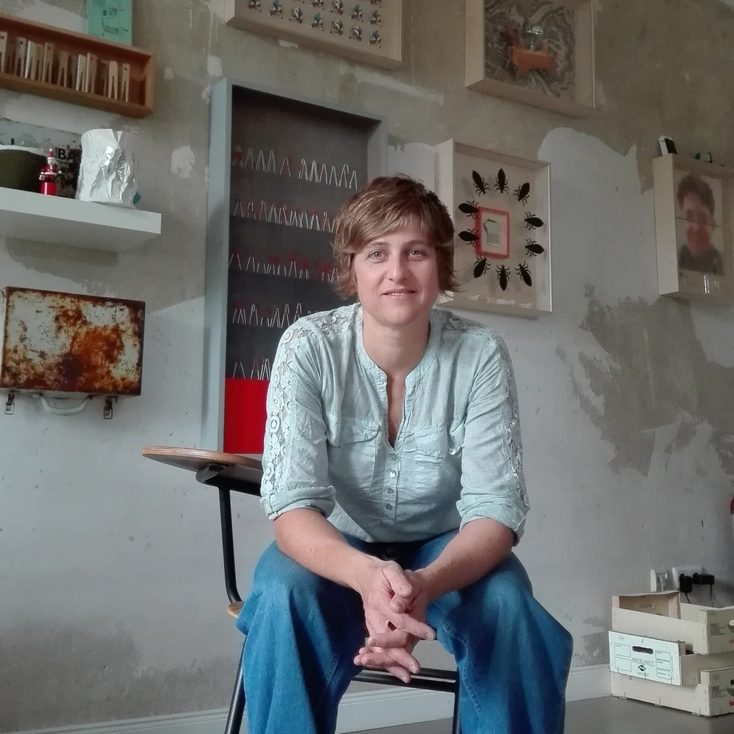
Carolin, Rixdorf is very little-known part of Neukölln. What brought you here?
Before coming here, I lived in Kreuzberg for almost a year. I wanted to look for a new apartment to enlarge my space. I always found Neukölln interesting, with its rough pavement and the opportunity to further develop the neighborhood. A close friend had heard about an apartment recently vacated by his housekeeper, and I moved in.
In your first life you were goldsmith. How does a goldsmith become an artist?
Oy, that question can hardly be answered in a few sentences. I would have to go on a bit. In my life, nothing happens by chance. Many of the decisions I’ve made haven’t been clear from the start. Back when I was about to take the Abitur I had no idea what I wanted to do afterwards. One of my classmates told me of her desire to become a goldsmith. “Aha, Goldsmithing, that might be something,” I thought. In any case, it wasn’t something to study, but it was a craft I could learn. At that time, there were only a few places to train as a goldsmith. Another of my classmates knew the owner of a goldsmithy. Working there for the next three-and-a-half years, I benefited from a lot of training. The highlight was the vocational day school in Cologne that I attended on Fridays. My boss was an excellent draftsman and designer. I was always fascinated by the idea of taking my own creations on paper and realizing them in 3D. After the apprenticeship, I studied design with a specialization in product design in Münster. That’s another story. How much time do you have, Paulina? I met an artist who invited me to exhibit in her studio. That was shortly before my move to Berlin in late 2008. On this occasion, I created the first of my framed-object pieces out of natural materials. Ja… and in Berlin I have developed further. My participation in “48 hours Neukölln” 2009 was like a springboard for me.

Do you view yourself as a designer, an artist or a craftswoman? These categories are getting more and more fluid these days. How can they be combined? Where does art end and design begin, and vice versa?
It is exactly this mixture. I am neither one nor the other. The mixture makes the charm. My study of design has trained me in appearances and function. My artistic side creates patterns of order, turns everything on its head and/or combines things which don’t seem to go together. I need the craftsmanship to implement my ideas. The border is fluid, yes — I share your opinion. And I welcome it very much. I find it nonsensical to separate the one from the other. I myself don’t ask what is what. I do it because I like this blurring of genres and I like to avoid categories. Why? This, precisely, is artistic freedom.

Your work lives on small stories – sometimes mind-boggling, often deeply hidden … Your personal story briefly summarized?
Summarizing briefly is not exactly one of my strengths, as you may have noticed. Okay. Three words that sum it up: coincidences, coincidences, coincidences. “Fate” also works. But the English word “serendipity” for “happy coincidence” expresses it best. I was just born under a lucky star.

You have succeeded in approaching your hobby, namely gathering everyday things that most people do not notice, with an almost scientific meticulousness, and putting these things into a new context. Where does it come from? Is there a childhood story that inspired this?
Interesting question. Is there an origin? Yes, perhaps. As a child, I liked to play with wooden blocks, marbles, spools of yarn, or other things that seem to be the same and yet all different in detail. I like to sort and order. This is reflected in my work.

You get to the heart of things, to capture their peculiarities, to improve them. Your approach is like a sort of alchemy. Where do you find your “gold”?
Frequently on the street. My gaze is like a detector pointed down, rather than straight ahead. Sometimes it is gifts from friends. There is a great junk store on Richardstraße. They somehow have everything, from office clamps to living room cabinets. If I don’t find what I am looking for, I find something else, which sometimes fits even better or inspires a different idea. Often, I find without searching.
Does everything that you collect show signs of use? … Is everything “vintage” or are there works that arise from new “relics of everyday life”?
I’ve also tried to buy and incorporate new things. But these objects can be overly slick, they have not experienced anything. Too boring. The patina of the object speaks without words and is much more exciting. I did do a project with ice spoons, which I bought, but I altered their appearance. That’s how it goes. They are still waiting for me to deal with them.

Your workshop is a veritable museum. You are literally surrounded and absorbed by your found objects. Don’t you need a little privacy to gather energy and strength for the next journey of discovery?
Among other things, this is my inspiration. I don’t like completely white walls. I need a visual abundance for new ideas. All of the things around me are not always present, though. I store some in cases or assortment boxes. For a recent exhibition, I gathered up everything from this stock that had touched me in some way. Gradually the piece developed from this.

How important is color to you?
Color has only recently become very important to me. Color is life and energy. You can use colors discreetly as accents, use them in a targeted manner or just let them pop. In my more recent work, I’ve been working with neon-colored poster cartons. Recently, at “48 hours Neukölln” in 2016, I used fluorescent colors and black light. This created a beautiful effect.

And how does two-dimensionality relate to three-dimensionality in your work?
Everything is possible and can be combined. There are no borders.

Arranging a number of the same kinds of objects has a contemplative component. Is this a sort of meditation for you?
Well yes, even consciously. In my work with these objects, I am sometimes so drawn in and concentrated that it can surely count as some form of meditation. It is moments of happiness.

Do you have a favorite piece and why?
The work with the Pink Panther comes to mind. The Panther is placed between a question and the somewhat hidden answer. He acts as a questioner and encourages the viewer to find the answer. I like this kind of interaction, and, of course, the Panther himself.
Are there any works that you do not want to part with, as they symbolize an intimate, personal story?
Thankfully not. Everything I put together can and should change owners. I am happy when others get find joy in my works.
On a related note, you curated an exhibition with real stories from different people and their corresponding story-tellers, in the framework of 48 Hours in Neukölln.
Can one bring you a personal history, for you to tell it anew? A personal work of art as a commission? Is this a work of immortalization or of therapeutic transformation?
In 2015, the theme of the festival was “S.O.S. – Art Saves the World “. I asked some friends to tell me about a personal experience that was especially meaningful, which they connect with an object. By integrating each story with a humorous or playful art object, I wanted to create a new, positive context between object and storyteller. I hope that it has worked for me here and there. This was my own thematic project.
For a commissioned work, it is less therapeutic. It is actually more about immortalization. Or maybe it is therapeutic, who knows. That would be a wonderful side effect. If I receive an item from the customer, I would like to know its exact significance. This is important in order to create the right framework for this object, in the truest sense of the word. My questions to the client are sometimes then passed through the family to find an answer. This is exciting, also for me.
So I tell a story which is not new, rather I bring together everything that already belongs to the object, everything that adds to its meaning. Here my thoughts can already go in many directions. So my customers are often surprised by the final piece.

Your love for detail characterizes you as a person. What about the big picture – do you have a mental image of it from the beginning, or does it develop over the course of the work?
It is rare that I have a picture in mind. It is a process. A lot of things are only revealed in the composition. You can sense it, even if it doesn’t all fit together yet. Then I cut something out, exchange something or add something new. Here too, chance is a good advisor. The work does not only come from the gut. The mind creates the concept and can be guided by feeling.

You produce all of your frames by yourself. Often the art is created by the frame itself.
I can’t make all of my frames myself. I work with a wonderful carpenter who has the soul of a designer and artist. The content and the frame are part of a concept. I do not separate that.

In addition to your installations, you also work as a product designer? Tell us a bit about your projects. What have been your favorite so far?
My study of design has provided me with an important foundation in many respects. However, I no longer understand myself as a pure product designer. Like in a well-mixed cocktail, I mix the best parts of everything I’ve learned. A product, or rather a project, which has accompanied me since my studies, is “seveninone”, a chewing gum bag which I have developed for stick gum. It is, if you like, very near to my heart. I’ve been chewing gum for ages and it was also the topic of my diploma thesis.
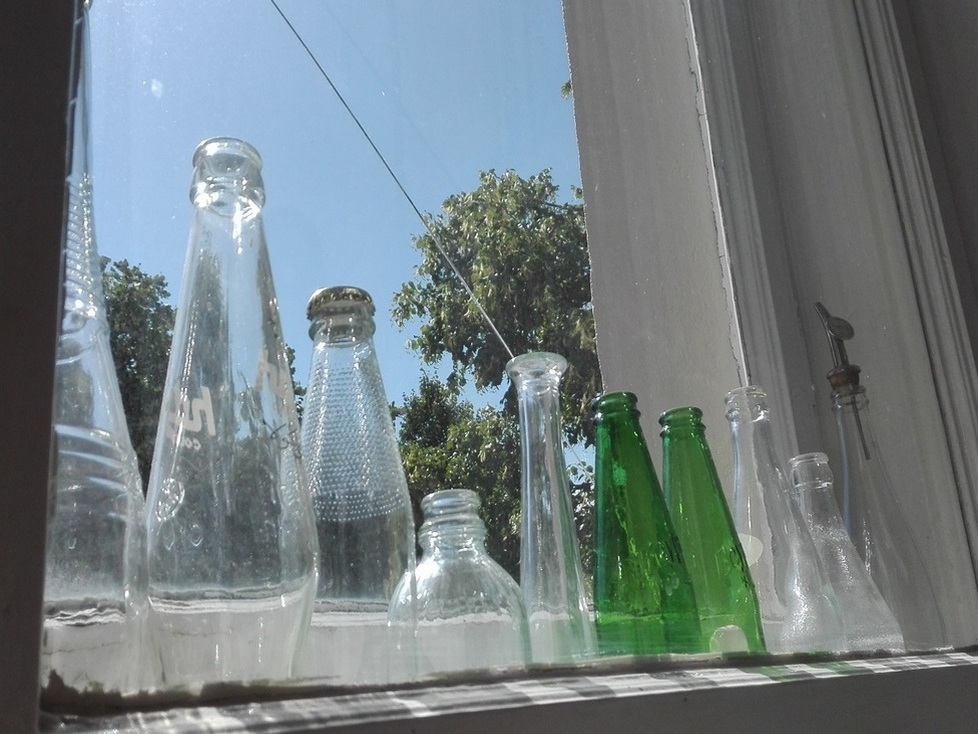
How would you characterize your clients?
Appreciative, humorous, open, detail-loving, warm and affectionate.

Is there something you hope to do in the future?
On my own intellectual backburner, for the past few years I’ve been playing around with the concept for a journey through all 16 German states… I would stage whatever I find on the road, what people give me, or what I come across otherwise, in some way that speaks to the state in which I found it. This could be exciting, because I don’t have a plan for what it will look like. At this point I can just plan the route.

Many thanks, dear Carolin, for your thoughts and for the wonderful time that we spent in your exceptional habitat.
Find more about Carolin Koch’s work here.

